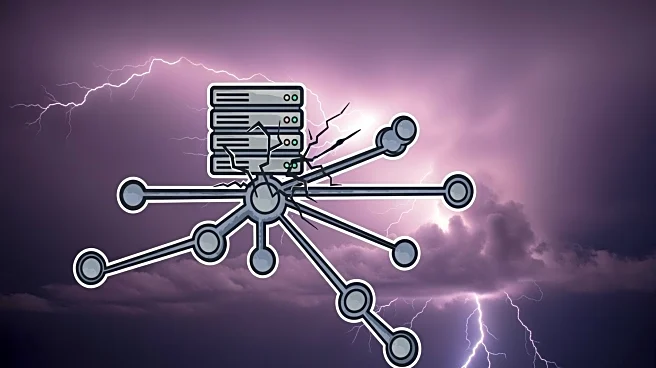What's Happening?
Amazon Web Services (AWS) experienced a significant outage early on October 20, disrupting numerous websites and apps, including Snapchat, Venmo, and more. The outage began around 3 a.m. EST and was rooted in the US-EAST-1 Region, based in Northern Virginia.
AWS attributed the disruption to an underlying issue with DNS, which helps translate website names into IP addresses. As of 6:35 a.m. EST, AWS reported that the issue was mostly resolved, with services showing signs of recovery.
Why It's Important?
The AWS outage highlights the critical role of cloud computing services in maintaining the functionality of digital platforms. The disruption affected major websites and apps, emphasizing the dependency on AWS's infrastructure. Businesses and consumers faced challenges due to the outage, underscoring the need for robust contingency plans and diversified cloud strategies to mitigate future risks.
What's Next?
AWS continues to work towards a full resolution of the outage, with most services recovering. Companies affected by the disruption may need to reassess their reliance on AWS and consider alternative cloud solutions to enhance resilience. The incident may lead to increased scrutiny of cloud service providers and discussions on improving infrastructure reliability.
Beyond the Headlines
The outage serves as a reminder of the potential risks associated with centralized cloud services. It may prompt discussions on the ethical and legal implications of data dependency and the need for regulatory frameworks to ensure service reliability. Long-term shifts in cloud computing strategies could emerge as companies seek to balance efficiency with security and stability.













